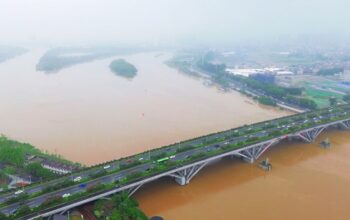
The political crisis in Sri Lanka escalated earlier this year as the devastating consequences of the government’s mismanagement of the economy started to hit harder than ever, with fuel running out and food running short.
As protests intensified in the spring, President Gotabaya Rajapaksa tried to offer incremental compromises by forcing some members of his cabinet to resign while shuffling others to new roles.
But protesters wanted the whole government to go, and the president was struggling to convince his elder brother and prime minister, Mahinda Rajapaksa, to give up his seat.
A protest camp developed along the scenic Galle Face at the heart of the capital, with protesters insisting they would not go home until the Rajapaksas left the government.
In May, Mahinda Rajapaksa was forced out as prime minister, but only after a large group of his supporters marched out of his residence and attacked the camps of peaceful protesters.
The clashes unleashed a wave of violence and vandalism across the country, raising fears that the country could break into outright anarchy. The prime minister fled to a military base in the middle of the night.
The president has held firm, hoping he could weather the protests and complete the remaining two years of his term. He appointed a new prime minister, Ranil Wickremesinghe, who has tried to raise financial aid from allied countries and work with the International Monetary Fund to restructure the country’s immense foreign debt.
But the protests continued. On Saturday, the huge numbers of people descending on the capital, Colombo, were a clear sign that none of Mr. Rajapaksa’s moves were buying him much time.
The daily reality of people’s lives has grown only harsher in recent weeks, with shortages of fuel and essential medicine. Citizens have lined up at gas stations, often in vain. Local news media have reported the deaths of at least 15 people in fuel lines, from heatstroke and other causes, since the beginning of the crisis.


